 W
WThe book of hours is a Christian devotional book popular in the Middle Ages. It is the most common type of surviving medieval illuminated manuscript. Like every manuscript, each manuscript book of hours is unique in one way or another, but most contain a similar collection of texts, prayers and psalms, often with appropriate decorations, for Christian devotion. Illumination or decoration is minimal in many examples, often restricted to decorated capital letters at the start of psalms and other prayers, but books made for wealthy patrons may be extremely lavish, with full-page miniatures. These illustrations would combine picturesque scenes of country life with sacred images. Books of hours were usually written in Latin, although there are many entirely or partially written in vernacular European languages, especially Dutch. The English term primer is usually now reserved for those books written in English. Tens of thousands of books of hours have survived to the present day, in libraries and private collections throughout the world.
 W
WThe Bedford Hours is a French late medieval book of hours. It dates to the early fifteenth century (c. 1410–30); some of its miniatures, including the portraits of the Duke and Duchess of Bedford, have been attributed to the Bedford Master and his workshop in Paris. The Duke and Duchess of Bedford gave the book to their nephew Henry VI in 1430. It is in the British Library, catalogued as Add MS 18850.
 W
WThe Belles Heures of Jean de France, Duc de Berry, or Belles Heures of Jean de Berry is an early 15th-century illuminated manuscript book of hours commissioned by the French prince John, Duke of Berry, around 1409, and made for his use in private prayer and especially devotions to the Virgin Mary. The Belles Heures is one of the most celebrated manuscripts of the Middle Ages and very few books of hours are as richly decorated as it.
 W
WThe Black Hours of Galeazzo Maria Sforza, M 1856 is an illuminated book of hours, now in the Austrian National Library in Vienna. The book used to be the property of Galeazzo Maria Sforza, the fifth Duke of Milan. It was produced in Bruges, Flanders, probably between 1466 and 1477. Its name derives from its black borders and dark colour scheme, also found in the New York Black Hours, Morgan MS 493, and of a type favoured by the Burgundian court. It is one of about seven surviving black books of hours, all luxury books from the circle of the Burgundian court around this time. It is identified by some with the Black Hours of Charles the Bold that is mentioned in contemporary records, but others disagree.
 W
WThe Black Hours, MS M.493 is an illuminated book of hours completed in Bruges between 1460 and 1475. It consists of 121 leaves, with Latin text written in Gothic minuscule script. The words are arranged in rows of fourteen lines, and follow the Roman version of the texts. The lettering is inscribed in silver and gold, and placed within borders ornamented with flowers, foliage and grotesques, on pages dyed a deep blueish black. It contains fourteen full-page miniatures and opens with the months of the liturgical calendar, followed by the Hours of the Virgin, and ends with the Office of the Dead.
 W
WThe Book of Hours of Engelbert of Nassau is a book of hours in the Dominican Rite, illuminated by the Master of Mary of Burgundy, which was produced in Ghent in the 1470s or 1480s for Engelbert II of Nassau. It is regarded as one of the high-points of Flemish manuscript illumination.
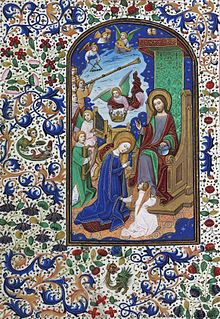 W
WThe Book of Hours of Leonor de la Vega is a codex of illuminated manuscript on vellum by Willem Vrelant. It is in the National Library of Spain (Vitr.24-2). The pages are 19 x 13 centimeters in size.
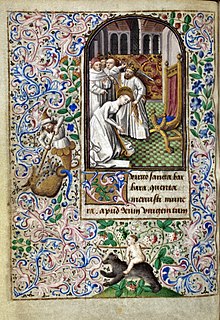 W
WThe Book of Hours of Simon de Varie is a French illuminated manuscript book of hours commissioned by the court official Simon de Varie, with miniatures attributed to at least four artists; hand A who may have been a workshop member of the Bedford Master, the anonymous illustrators known as the Master of Jean Rolin II, the Dunois Master and the French miniaturist Jean Fouquet. It was completed in 1455 and consists of 49 large miniatures and dozens of decorative vignettes and painted initials, which total over 80 decorations. Fouquet is known to have contributed six full leaf illuminations, including a masterwork Donor and Virgin diptych. A number of saints appear - Saint Simon is placed as usual alongside Saint Jude ; other pages feature saints Bernard of Menthon, James the Greater and Guillaume de Bourges.
 W
WThe Heures de Charles d'Angoulême is a book of hours commissioned in the late 15th century by Charles, Count of Angoulême, father of king Francis I of France. It is now in the Bibliothèque nationale de France in Paris, under the number Latin 1173.
 W
WThe Da Costa Book of Hours is a 1515 illuminated manuscript book of hours, now in the Morgan Library and Museum in New York. It was produced by Simon Bening and his workshop, possibly for a member of the Portuguese Sá family, before later belonging to Álvaro da Costa, an advisor to Manuel I of Portugal.
 W
WThe De Grey Hours is a book of hours that was produced in Flanders, where the artist tailored the manuscript for the English market by including a miniature of St Thomas Becket and naming appropriate festivals in the Calendar. There are sixty-seven illustrations in De Grey Hours, including illuminated miniatures and historiated initials. The manuscript dates from around 1400.
 W
WThe Farnese Hours is an illuminated manuscript created by Giulio Clovio for cardinal Alessandro Farnese in 1546. Considered the masterpiece of Clovio, this book of hours is now in the possession of the Morgan Library & Museum in New York City.
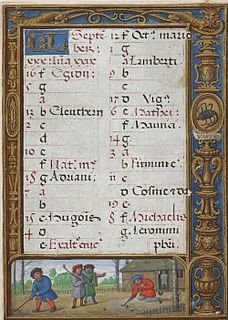 W
WThe Golf Book is the common name for an illuminated manuscript Book of Hours in the Use of Rome dating from the 1540s. Only 23 pages remain of the original created by the illuminator Simon Bening and his studio in Bruges. It owes its popular name to one illustration in the calendar, with people playing a game resembling that of golf. It is presumed to have been made for a Swiss patron as the book includes a miniature painting of St Boniface of Lausanne.
 W
WThe Grandes Heures of Anne of Brittany is a book of hours, commissioned by Anne of Brittany, Queen of France to two kings in succession, and illuminated in Tours or perhaps Paris by Jean Bourdichon between 1503 and 1508. It has been described by John Harthan as "one of the most magnificent Books of Hours ever made", and is now in the Bibliothèque nationale de France as Ms lat. 9474. It has 49 full-page miniatures in a Renaissance style, and more than 300 pages have large borders illustrated with a careful depiction of, usually, a single species of plant.
 W
WThe Grey-FitzPayn Hours is an illuminated book of hours formerly thought to have been commissioned by Sir Richard de Grey for his bride Joan FitzPayn, but now thought to have been made for members of the Pabenham and Clifford families, produced in the English Midlands around 1300 to 1308. It follows the Use of Sarum, standard in England from the mid-13th century onwards. It is 24.5 cm by 17 cm, with 93 folios, 2 full-page miniatures, 3 large figured initials and other ornamental initials and borders. It is now Cambridge, Fitzwilliam Museum, MS. 242.
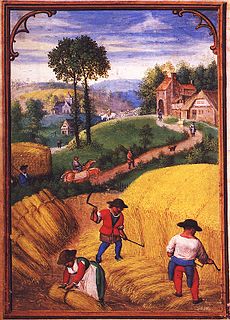 W
WThe Munich-Montserrat Book of Hours is a 1535 illuminated manuscript book of hours. It measured 10 by 14 cm in its original form. It was produced by Simon Bening and his workshop, possibly for Alonso de Idiaquez, royal secretary to Charles V, Holy Roman Emperor. Its miniatures are stylistically similar to other books of hours by Bening and his workshop such as the Da Costa Book of Hours, the Hennessy Book of Hours and the Hours of Isabella of Portugal, all produced for Spanish nobles.
 W
WThe Hours of Catherine of Cleves is an ornately illuminated manuscript in the Gothic art style, produced in about 1440 by the anonymous Dutch artist known as the Master of Catherine of Cleves. It is one of the most lavishly illuminated manuscripts to survive from the 15th century and has been described as one of the masterpieces of Northern European illumination. This book of hours contains the usual offices, prayers and litanies in Latin, along with supplemental texts, decorated with 157 colorful and gilded illuminations. Today, both parts of the manuscript that forms this book are housed at the Morgan Library and Museum in New York City.
 W
WThe Hours of Charles V is an illuminated book of Hours produced in Paris in the late 15th or early 16th century for Charles V, Holy Roman Emperor. It is now in the Biblioteca Nacional de España.
 W
WThe Hours of Étienne Chevalier is an illuminated book of hours commissioned by Étienne Chevalier, treasurer to king Charles VII of France, from the miniature painter and illuminator Jean Fouquet.
 W
WThe Hours of Giangaleazzo Visconti is a Roman-liturgy illuminated Book of Hours that was commissioned by the ruler of Milan, Gian Galeazzo Visconti, in Italy in the late 14th century. A Book of Hours is a personal prayer book that contained, in part, the Hours of the Virgin, a daily devotional that was popular at the time. This particular Book of Hours was created by two master illuminators, beginning with Giovannino dei Grassi before his death, and completed by Luchino Belbello da Pavia.
 W
WThe Hours of Hennessy or Hours of Notre-Dame is a 1530 illuminated book of Hours attributed to the Bruges artist Simon Bening and his workshop. Its original commissioner is unknown and it is unknown how it was acquired by its later owners the Irish Hennessy family. It was bought for 12,000 francs from Peter Hennessy's heirs by the Royal Library of Belgium and is one of its most important manuscripts.
 W
WThe Hours of Henry VIII is a 15th-century illuminated book of hours, painted by Jean Poyet in Tours. Its 400 pages contain 55 full-page miniatures. It is housed under shelfmark MS H.8 in the Morgan Library & Museum, New York.
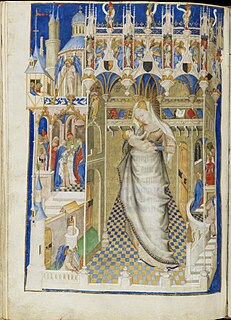 W
WThe Hours of Isabella Stuart, Duchess of Brittany is an illuminated Book of Hours produced at Angers either between 1417 and 1418 or before 1431, in the workshop of the Rohan Master, though there were contributions from other masters, including the Master of Giac and the Master of the Virgin.
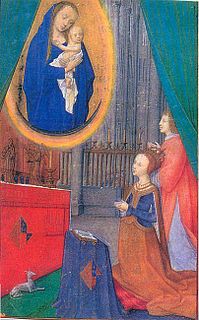 W
WThe Hours of James IV of Scotland, Prayer book of James IV and Queen Margaret is an illuminated book of hours, produced in 1503 or later, probably in Ghent. It marks a highpoint of the late 15th century Ghent-Bruges school of illumination and is now in the Austrian National Library in Vienna. It is thought to have been a wedding gift from James IV of Scotland or another Scottish nobleman to James's wife Margaret Tudor on the occasion of their marriage, perhaps finishing a book already started for another purpose. A number of artists worked on the extensive programme of decoration, so that "the manuscript in its entirety presents a rather odd picture of heterogeneity". The best known miniature, a full-page portrait of James at prayer before an altar with an altarpiece of Christ and an altar frontal with James's coat-of-arms, gave his name to the Master of James IV of Scotland, who is now generally identified as Gerard Horenbout, court painter to Margaret of Austria; he did only one other miniature in the book. The equivalent image of Margaret is the only image by another artist, using a rather generic face for the queen's portrait, and in a similar style to that of the Master of the First Prayer Book of Maximilian. Other artists worked on the other miniatures, which include an unusual series of unpopulated landscapes in the calendar – perhaps the Flemish artists were not sure how Scots should be dressed.
 W
WThe Hours of Jean de Boucicaut is believed to have been created between 1405 and 1408. It contains the Paris Liturgy of the Hours. While characterized by typical Parisian styles of illumination, some illustrations in the manuscript are quite innovative. This manuscript contains 44 miniatures by the Boucicaut Master, possibly within the assistance of students, and is now in the Musée Jacquemart-André, Paris, ms. 2. The Boucicaut Master experimented with perfecting aerial perspective and with his works established the precedent of historically portraying biblical scenes. Jean de Boucicaut, who was a Marshal of France, commissioned the book as a tool of daily devotion. The illuminated pages correspond to events in Marshal Jean de Boucicaut's life as well as incorporating biblical figures with whom he identifies.
 W
WThe Hours of Jeanne d'Evreux is an illuminated book of hours in the Gothic style. According to the usual account, it was created between 1324 and 1328 by Jean Pucelle for Jeanne d'Evreux, the third wife of Charles IV of France. It was sold in 1954 to the Metropolitan Museum of Art in New York where it is now part of the collection held at The Cloisters, and usually on display. The book is very lavishly decorated, mostly in grisaille drawings, and is a highly important example of an early royal book of hours, a type of book designed for the personal devotions of a wealthy lay-person, which was then less than a century old. It has been described as "the high point of Parisian court painting", showing "the unprecedentedly refined artistic tastes of the time".
 W
WThe Hours of Jeanne de Navarre is an illuminated book of hours with miniatures painted by Jean Le Noir. The book was commissioned by Philip VI of Valois and his wife, Blanche de Navarre, for Jeanne de Navarre, Queen of Navarre. The book was created sometime between 1336 and 1340 and is now in the Bibliothèque Nationale, Paris.
 W
WThe Hours of Joanna I of Castile is a sixteenth-century illuminated codex housed in the British Library, London, under shelfmark Add MS 35313.
 W
WThe Hours of Lorenzo de' Medici is a Renaissance book of Hours produced in Florence for Lorenzo de' Medici in the style of Francesco di Antonio del Chierico, the favourite miniature painter of Lorenzo's grandfather Cosimo de' Medici. It follows the Roman liturgy of the hours and contains illustrated calendars of saints and nine large miniatures with decorative borders.
 W
WThe Hours of Louis XII was an illuminated manuscript book of hours produced by Jean Bourdichon for Louis XII of France. It was begun in 1498 or 1499, going by the king's age of 36 given below his portrait; he became king on 7 April 1498. The book reached England, where it was broken up around 1700. Now only parts of it survive – in total sixteen full-page miniature paintings, two sheets of text and fifty-one sheets of text bound in the wrong order as a thin volume.
 W
WThe Hours of Margaret of Foix is an illuminated book of Hours, named after its patron, Margaret of Foix. It follows the Paris liturgy and was produced in France between 1471 and 1486. Many of the prayers included in this manuscript focus on childbirth, motherhood, and producing a male heir. The illuminations include scenes from the Passion of Christ and Christ's birth. It is now part of the Salting Collection in the Victoria and Albert Museum in London.
 W
WThe Hours of Maria d'Harcourt is an illuminated book of hours produced in 1415 in Arnhem and Nijmegen in the Duchy of Guelders. It follows the Roman liturgy, with 6 full-page miniatures and 86 smaller miniatures, with stylised borders. It is held partly by the Staatsbibliothek zu Berlin and partly by the Österreichische Nationalbibliothek.
 W
WThe Hours of Mary of Burgundy is a book of hours, a form of devotional book for lay-people, completed in Flanders around 1477. It was probably commissioned for Mary, the ruler of the Burgundian Netherlands and then the wealthiest woman in Europe. No records survive as to its commission. The book contains 187 folios, each measuring 22.5 by 15 centimetres. It consists of the Roman Liturgy of the Hours, 24 calendar roundels, 20 full-page miniatures and 16 quarter-page format illustrations. Its production began c. 1470, and includes miniatures by several artists, of which the foremost was the unidentified but influential illuminator known as the Master of Mary of Burgundy, who provides the book with its most meticulously detailed illustrations and borders. Other miniatures, considered of an older tradition, were contributed by Simon Marmion, Willem Vrelant and Lieven van Lathem. The majority of the calligraphy is attributed to Nicolas Spierinc, with whom the Master collaborated on other works and who may also have provided a number of illustrations.
 W
WThe Hours of Philip the Bold is a late 14th-century illuminated book of hours produced in Paris for Philip the Bold, Duke of Burgundy (1363-1404). It contains illustrated calendars, figured initials and 11 large miniatures with ivy borders, following the Paris liturgy. The manuscript has a devotional use. Philip reportedly recited his daily prayers from this manuscript. His hours, which contains almost 200 images, is one of the most worldly manuscripts to survive from the library of the Burgundian Dukes. It is now MS. 3-1954 in the Fitzwilliam Museum, Cambridge.
 W
WThe Hours of Philip the Good refers to one of at least two illuminated books of hours produced for Philip the Good. The first of these is in the Bibliothèque Nationale, Paris, and the second (1454–55) in the National Library of the Netherlands, The Hague.
 W
WThe Hours of Saint-Omer is an illuminated book of hours produced in Northern France for the use of Marguerite de Beaujeu around 1320-1330. It follows the Arras liturgy. The manuscript gains its name from the fact that its calendar gives special attention to the church and the relics of Saint Omer in the town of Saint-Omer.
 W
WThe Howard Psalter and Hours is a 14th-century illuminated prayerbook. It includes a liturgical Psalter with canticles and litany, the Office of the Dead, a calendar of East Anglian origin and an incomplete Hours of the Passion. It was produced between 1310 and 1320. It is written in Latin in a Gothic script in two columns per page. There are 115 extant folios which measure 360 by 235 mm. The text block occupies an area of 250 by 166 mm. It is bound together with the De Lisle Psalter, a contemporary psalter.
 W
WThe Maastricht Hours is a book of hours that was produced in the vicinity of Liège early in the 14th century and is now among the Stowe manuscripts of the British Library. It is known for its colourful and imaginative miniatures, often on animal themes. It has been fully digitised and is available on the British Library website.
 W
WMilan, Biblioteca Trivulziana, Cod. 470 is a 15th-century Book of Hours. It was made in a French-Burgundian scriptorium. It measures 131 by 89 mm and has 366 folios. The text is written in Textualis Gothic bookscript. There are twenty grisaille miniatures within wide, decorated borders.. There are also twenty-two pages with elaborate initials and borders which match the borders surrounding the miniatures. There are many other less elaborate decorated initials. The miniatures are the work of an unknown artist from the circle of Phillippe de Mazerolles. The codex is still bound in its original binding of brown leather with stamped ornamentation.
 W
WThe Petites Heures of Jean de France, Duc de Berry is an illuminated book of hours commissioned by John, Duke of Berry between 1375 and 1385–90. It is known for its ornate miniature leaves and border decorations.
 W
WThe Primer of Claude of France was the first book owned by the French princess Claude of France, eldest daughter of Louis XII of France and Anne of Brittany. Commissioned by Anne for Claude and produced in c. 1505, it is a rare surviving example of a manuscript designed for a medieval child.
 W
WThe Ravenelle Hours, or the Book of Hours of Johannete Ravenelle, is a 15th-century book of hours made in Paris, France and kept in Uppsala University Library, Sweden. It belonged to Johannete Ravenelle, probably a middle class woman, and was made by the so-called Ravenelle Painter. It has been dated to 1400–1405. Both stylistically and in subject matter it is a typical representative of books of hours made in Paris at this time. Its decoration includes 14 miniatures as well as other decorative elements. It is not known how the book came to Sweden; it was bought by Uppsala University Library from a private collector in 1953. It is bound in a binding from the turn of the twentieth century.
 W
WThe Grandes Heures de Rohan is an illuminated manuscript book of hours, painted by the anonymous artist known as the Rohan Master, probably between 1418 and 1425, in the Gothic style. It contains the usual offices, prayers and litanies in Latin, along with supplemental texts, decorated with 11 full page, 54 half page, and 227 small miniatures, decorated with tempera paints and gold leaf. The book margins are decorated with Old Testament miniatures with captions in Old French, in the style of a Bible moralisée. The full page illuminations are renowned for the highly emotional and dramatic portrayal of the agonies of Christ and the grief of the Virgin. According to Millard Meiss, "The Rohan Master cared less about what people do than what they feel. Whereas his great predecessors excelled in the description of the novel aspects of the natural world, he explored the realm of human feeling." Meiss concludes that the Rohan Master was the "greatest expressionist in 15th century France." Today, this manuscript is housed in the Bibliothèque Nationale, Paris, France.
 W
WThe Rothschild Prayerbook or Rothschild Hours, is an important Flemish illuminated manuscript book of hours, compiled c. 1500–20 by a number of artists.
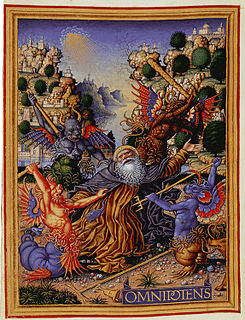 W
WThe Sforza Hours, is a richly illuminated book of hours initiated by Bona Sforza, widow of Galeazzo Sforza, Duke of Milan, around 1490, who commissioned the illuminator Giovanni Pietro Birago. The book remained in an unfinished state for 30 years until Margaret of Austria, Regent of the Netherlands, commissioned its completion in 1517–20 from the artist Gerard Horenbout. The book therefore contains decoration of the highest quality by two artists. It provides a unique example of an early sixteenth-century Northern Renaissance illuminator's response to Milanese art of the late Quattrocento. The history of the Sforza Hours also includes one of the earliest recorded examples of art theft.
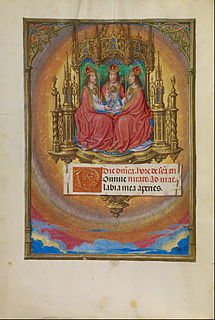 W
WThe Spinola Book of Hours is a sixteenth-century illuminated manuscript, consisting of 310 folios with 84 fully illustrated miniature paintings. This medieval manuscript was produced in the region between Bruges and Ghent in Flanders around 1510-1520. According to Thomas Kren, a former curator of the J. Paul Getty Museum, the artwork within the Spinola Hours can be attributed to five distinct artists. Forty-seven of these illuminated pages can be accredited to the 'Master of James IV'. The Spinola Hours bears a central coat-of-arms on the cover indicating it belonged to the Spinola family of Genoa. Today it is located at the J. Paul Getty Museum in Los Angeles.
 W
WThe Taymouth Hours is an illuminated Book of Hours produced in England in about 1325–35. It is named after Taymouth Castle where it was kept after being acquired by an earl of Breadalbane in the seventeenth or eighteenth century. The manuscript's calling number originates from its previous owner, Henry Yates Thompson, who curated an extensive collection of illuminated medieval manuscripts which he sold or donated posthumously to the British Library. The Taymouth Hours is now held by the British Library Department of Manuscripts in the Yates Thompson collection.
 W
WJacquemart de Hesdin was a French miniature painter working in the International Gothic style. In English, he is also called Jacquemart of Hesdin. During his lifetime, his name was spelt in a number of ways, including as Jacquemart de Odin.
 W
WThe Très Riches Heures du Duc de Berry or Très Riches Heures, is the most famous and possibly the best surviving example of manuscript illumination in the late phase of the International Gothic style. It is a book of hours: a collection of prayers to be said at the canonical hours. It was created between c. 1412 and 1416 for the extravagant royal bibliophile and patron John, Duke of Berry, by the Limbourg brothers. When the three painters and their sponsor died in 1416, possibly victims of plague, the manuscript was left unfinished. It was further embellished in the 1440s by an anonymous painter, who many art historians believe was Barthélemy d'Eyck. In 1485–1489, it was brought to its present state by the painter Jean Colombe on behalf of the Duke of Savoy. Acquired by the Duc d'Aumale in 1856, the book is now MS 65 in the Musée Condé, Chantilly, France.
 W
WThe Turin–Milan Hours is a partially destroyed illuminated manuscript, which despite its name is not strictly a book of hours. It is of exceptional quality and importance, with a very complicated history both during and after its production. It contains several miniatures of about 1420 attributed to an artist known as "Hand G" who was probably either Jan van Eyck, his brother Hubert van Eyck, or an artist very closely associated with them. About a decade or so later Barthélemy d'Eyck may have worked on some miniatures. Of the several portions of the book, that kept in Turin was destroyed in a fire in 1904, though black-and-white photographs exist.
 W
W